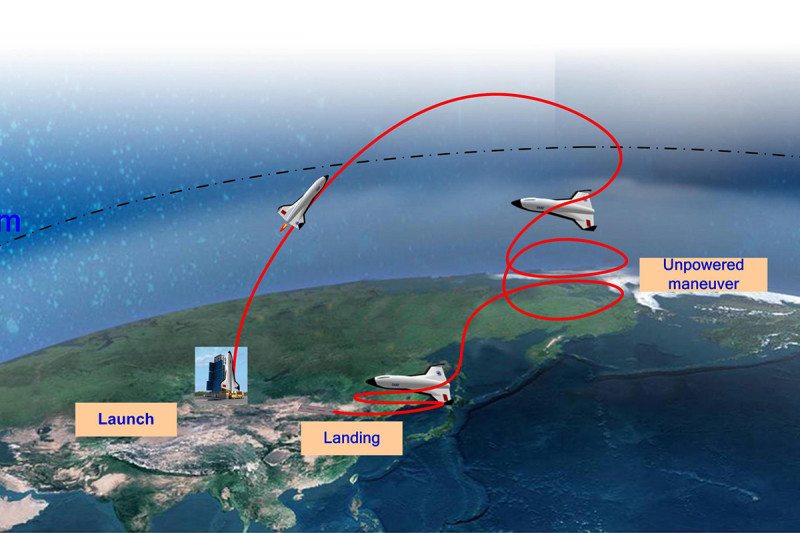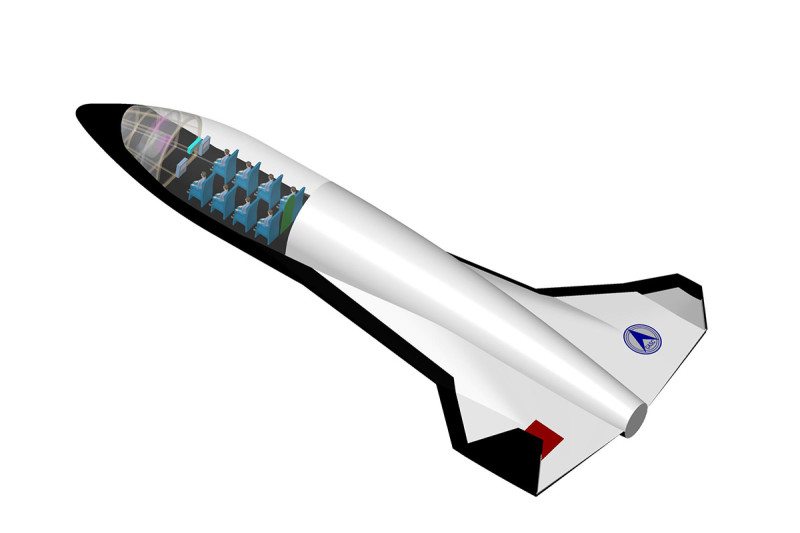
Mr Pengxin Han et al. from CALT
Even China can’t resist the lure of space tourism. A state-backed firm is developing a gigantic spaceplane, New Scientist can reveal. The plane may one day fly up to 20 passengers to the edge of space – significantly more people than any other commercial spaceflight firm has pledged to fly to date.
The China Academy of Launch Vehicle Technology in Beijing has designed a simple, one-piece spaceplane whose design can be scaled up to carry more people, academy rocket scientist Lui Haiquang told the International Astronautical Congress in Guadalajara, Mexico, last week.
The academy will have plenty of competition. Big names include Virgin Galactic, whose SpaceShipTwo spaceplane will offer six passengers trips to near-space, and XCOR, whose proposed Lynx vehicle will fly a single passenger seated beside a pilot. Blue Origin’s suborbital space capsule, New Shepard, aims to carry six tourists. But academy team leader Han Pengxin and his colleagues believe consumer demand will be high enough to build a much higher capacity spacecraft.
“More and more common persons are interested in the experience of space flight,” the team wrote in their IAC2016 paper, adding that the project is “very attractive” to “bosses and businessmen”.
They have designed a winged rocket that takes off under its own power. That sets it apart from SpaceShipTwo, which must be carried to high altitude by an aircraft before firing its own rocket.

Mr Pengxin Han et al. from CALT
“The vehicle will take off vertically like a rocket and land on the runway automatically without any ground or on-board intervention,” Han says. It will burn liquid methane and liquid oxygen.
Han’s team has designed two versions of their rocket plane. The first has a mass of 10 tonnes and a wingspan of 6 metres. This one, he says, should be able to fly five people to an altitude of 100 kilometres – where space officially begins – at speeds up to Mach 6, giving 2 minutes of weightlessness.
But a scaled up 100-tonne version, with a 12-metre wingspan, could fly 20 people to 130 kilometres at Mach 8, giving 4 minutes of weightlessness. That larger spacecraft is fast enough to help deliver small satellites into orbit, with the help of a small rocket stage add-on that would sit on top of the vehicle. And that payload-carrying capability will reduce tourist ticket prices, says Han. They also intend to make it reusable, so each plane should be good for up to 50 flights.
Test flights soon
Tests are advanced, Han adds. “The test flights will be finished in the next two years, because almost all of the ground tests have been finished and all the subsystems of the test vehicle worked very well.”
He imagines flights will launch from a commercial spaceport – whose location is as yet undecided – with payload launches in 2020. The plane will carry people when it is considered safe enough.
Han predicts that a ride will cost between $200,000 and $250,000.
Some are sceptical of the team’s claims. The spaceplane is an “interesting initiative”, says spaceflight expert Roger Launius at the Smithsonian Institution’s National Air and Space Museum in Washington DC, but he’s concerned about the lack of technical details in their four-page IAC paper.
“The most unusual part is the belief that they can send up to 20 people to 100 kilometres and more on a rocket without a mother ship and no staging, reusing it some 50 times,” he says. “It’s not explained how that will be accomplished. And the fact that they think they can test fly in the next 2 years is remarkable.”
So the onus is on the academy to prove this is more than a paper spaceplane, says Launius. “It is always easier to draw illustrations and talk possibilities than to build and fly spacecraft.
Others are more charitable. Outlandish as a 20-person spaceplane sounds, said a delegate at the IAC, who preferred to remain anonymous, the Beijing team’s aims are not impossible. “From an engineering standpoint, all the spaceflight operations the Chinese team suggest have been proven before. Whether they can do it safely, however, and make a viable suborbital business out if it, is another question.”








